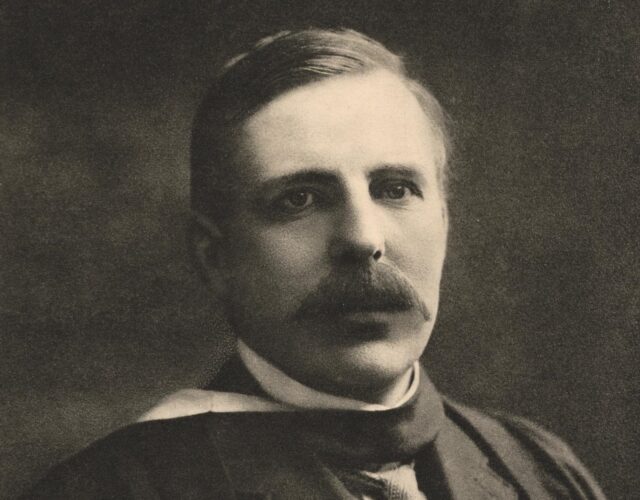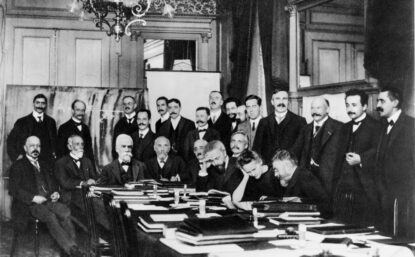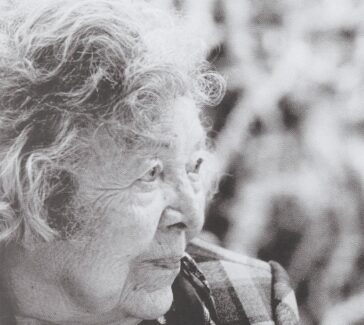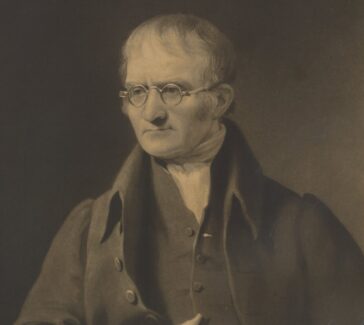Ernest Rutherford
Through his inventive experimental work Rutherford made many new discoveries in both radioactivity and nuclear physics.

Ernest Rutherford (1871–1937) postulated the nuclear structure of the atom, discovered alpha and beta rays, and proposed the laws of radioactive decay. He received the Nobel Prize in Chemistry in 1908.
A Series of Discoveries
A consummate experimentalist, Rutherford was responsible for a remarkable series of discoveries in the fields of radioactivity and nuclear physics. He discovered alpha and beta rays, set forth the laws of radioactive decay, and identified alpha particles as helium nuclei.
Most important, he postulated the nuclear structure of the atom: experiments done in Rutherford’s laboratory showed that when alpha particles are fired into gas atoms, a few are violently deflected, which implies a dense, positively charged central region containing most of the atomic mass.

Education and Early Career
Born on a farm in New Zealand, the fourth of 12 children, Rutherford completed a degree at the University of New Zealand and began teaching unruly schoolboys. He was released from this task by a scholarship to Cambridge University, where he became J. J. Thomson’s first graduate student at the Cavendish Laboratory.
There he began experimenting with the transmission of radio waves, went on to join Thomson’s ongoing investigation of the conduction of electricity through gases, and then turned to the field of radioactivity just opened up by Henri Becquerel and Pierre and Marie Curie.
Creative Partnerships

Throughout his career Rutherford displayed his ability to work creatively with associates, some of whom were already established at the institutions to which he was appointed and others of whom he attracted as doctoral or postgraduate students. At McGill University in Montreal, his first appointment, he worked with Frederick Soddy on radioactive decay.
At Manchester University he collaborated with Hans Geiger (of Geiger counter fame), Niels Bohr (whose model of atomic structure succeeded Rutherford’s), and H. G. J. Moseley (who obtained experimental evidence for atomic numbers).
During World War I this Manchester research group was largely dispersed, and Rutherford turned to solving problems connected with submarine detection. After the war he succeeded J. J. Thomson in the Cavendish Professorship at Cambridge and again gathered a vigorous research group, including James Chadwick, the discoverer of the neutron.
Honors
Like Thomson, Rutherford garnered many honors. He received the Nobel Prize in Chemistry for 1908; he was made a knight and then a peer with a seat in the House of Lords. For the ultimate honor he was buried in Westminster Abbey.






